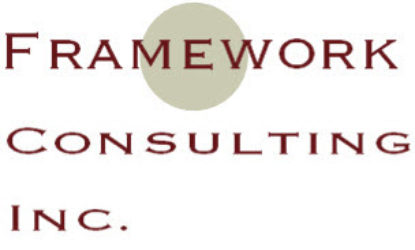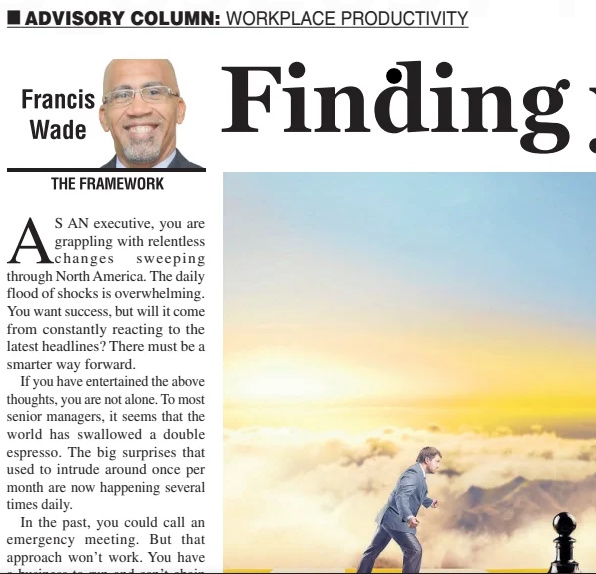As a senior executive, you are no stranger to the relentless waves of change sweeping across North America. The onslaught of daily upheavals can feel overwhelming, making it tempting to believe that success hinges on reacting swiftly to each new development. But is this truly the most effective path forward? Is there a smarter, more strategic way to navigate the turbulence?
If these questions have crossed your mind, you are not alone.
For many leaders, it feels as though the world has downed a double shot of espresso. Major disruptions that once occurred sporadically now seem to arrive in rapid succession, sometimes multiple times in a single day. In the past, convening an emergency meeting may have provided some sense of control. However, this approach is no longer sustainable. Constant crisis management is an exhausting, reactive cycle that diverts energy from long-term strategic imperatives. Forward-thinking executives are realizing that a different approach is required—one that prioritizes a steady course over continual reaction.
The End of a Comfortable Status Quo
Canada has long enjoyed a privileged economic relationship with the United States, a stable partnership that many organizations assumed would remain unshaken. For decades, Canadian businesses could rely on predictable trade policies and seamless access to the U.S. market, much like cyclists drafting behind a peloton leader.
But today, that certainty has eroded. The political landscape in the United States has grown increasingly volatile, resembling a cantankerous relative prone to unpredictable outbursts. Just as you wouldn’t stake your business on the hope that an erratic family member will suddenly become reliable, Canadian firms can no longer afford to take U.S. stability for granted. Instead, they must develop contingency plans that mitigate risks and reduce dependence on a single, unpredictable partner.
This shift is causing ripples throughout the entire supply chain, affecting customers, suppliers, distributors, and regulators on a global scale. Many Canadian executives are realizing that simply reacting to daily shocks is not a viable strategy. The smarter move is to step back and reassess their long-term direction.
Lessons From the Chaos
More business leaders are awakening to some hard but valuable lessons. While these insights have always been available in theory, firsthand experience has proven to be the ultimate teacher.
Lesson #1: The pace of disruption is too fast for deep analysis of every crisis.
The sheer speed at which events unfold means there is little time for comprehensive assessments of each disruption. Many executives now recognize that this state of volatility is not a passing phase—it is likely to persist for years, regardless of political leadership changes.
Lesson #2: Few organizations engage in rigorous scenario planning.
Despite repeated warnings about potential disruptions—such as Trump’s supporters actively promoting Project 2025—many assumed these threats would never materialize. As a result, they failed to anticipate today’s challenges and are now scrambling to adapt.
Lesson #3: Structural changes require years of planning and execution.
Adjusting supply chains, diversifying markets, and securing alternative resources take far longer than many executives expect. Consider Tremcar, a Canadian manufacturer of tanker trailers. The company relies on aluminum imports from the U.S., but retaliatory tariffs could jeopardize its operations. While Canada has domestic aluminum production, sourcing materials locally requires significant logistical adjustments. What seems like a straightforward shift is, in reality, a complex, long-term endeavor.
This challenge extends beyond Canada. In Jamaica, a transformation that has been years in the making is now disrupting the courier industry. Amazon’s recent introduction of free shipping to Jamaica may appear to be a win for consumers. However, for companies like MailPac, ShipMe, and DHL—whose business models revolve around importing goods for local shoppers—this shift presents a major existential threat.
If these firms did not foresee this change and adjust their strategic planning accordingly, they now face an uphill battle. This underscores a critical reality: businesses that fail to anticipate disruption are left scrambling to survive when it arrives.
Finding Stability Amid Chaos
It is easy to assume that your industry is an exception, that the disruptions affecting others won’t impact you. However, rather than relying on luck, a wiser course of action is to take proactive steps to future-proof your business.
The most effective way to navigate uncertainty is to step back from the daily noise and adopt a long-term perspective. This requires more than a vague vision statement or an inspiring corporate mantra—it demands a clearly defined True North that serves as a guiding principle for decision-making over the next 15 to 30 years.
This level of strategic foresight may seem daunting, especially in an environment where rapid changes create the illusion that long-term planning is futile. However, consider the analogy of air travel: throughout a flight, an airplane is off-course the majority of the time. Yet, through continuous small corrections, it reaches its intended destination.
Your organization must do the same.
Instead of allowing the turbulence of current events to dictate your direction, use these disruptions as an impetus to sharpen your strategic focus. Employees, stakeholders, and investors may feel unsettled by the uncertainty around them, but a well-defined True North provides the stability and clarity needed to move forward with confidence.
By resisting the urge to react to every headline and instead anchoring your organization in a steadfast long-term vision, you create a roadmap that ensures sustainable success—regardless of the chaos that may unfold along the way.

